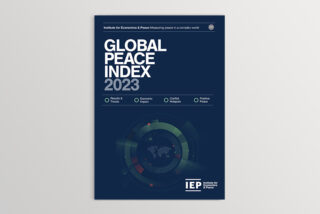The report highlights emerging conflict trends that not only jeopardise global harmony but also affect the economic value of peace. This article delves deep into the revealing data, shedding light on these pressing concerns.
In evaluating these trends in the Global Peace Index, the IEP meticulously considered key indicators, encompassing measures of ongoing conflicts — such as the intensity of organised internal conflicts and death counts — relations with neighbouring nations, societal safety metrics like the number of refugees, IDPs, the impact of terrorism, as well as homicide and incarceration rates. Additionally, the IEP examined militarisation aspects, including military expenditure, armed service personnel counts, and the ease of access to small weapons.
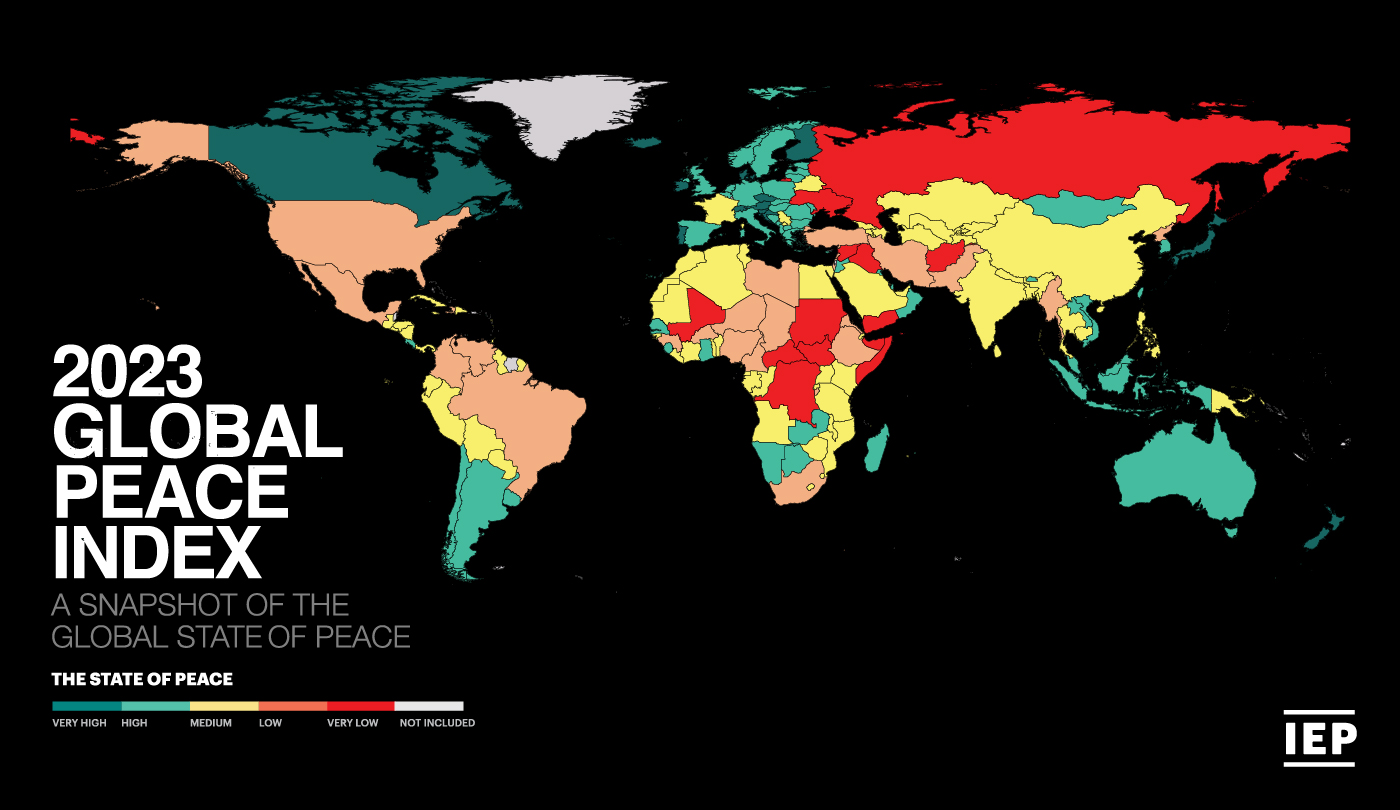
The 2023 Global Peace Index report reveals a concerning surge in global conflicts, with pre-existing tensions predating even the significant Russian invasion of Ukraine, touted as the most significant conflict since World War II. A stark increase in conflict-related deaths had already been observed prior to the Russia-Ukraine conflict, overturning a five-year decline since the peak of the Syrian civil war in 2014. Notably, battle deaths spiked by 45% between 2020 and 2021, predominantly in the Asia-Pacific and sub-Saharan Africa regions. As we look to the horizon, potential challenges such as climate change, economic disparities, and political instability could arise in the future, potentially affecting regions globally.
Rising geopolitical competition marks a shift in conflict dynamics in an increasingly multipolar world, particularly in strategic regions. Notably, powerful states, like Russia and China, and emerging regional actors like Türkiye, Saudi Arabia, and Iran are now more proactive. They are offering political, military, and financial support beyond their immediate regions, thereby intensifying conflicts.
The UCDP-PRIO Armed Conflict Dataset, in its conflict type definition, classifies “Intrastate armed conflict” as occurring between the government of a state and one or more internal opposition groups without intervention from other states. In contrast, “Internationalised intrastate armed conflict” is defined as occurring between the government of a state and one or more internal opposition groups with intervention from other states on one or both sides.
Remarkably, the number of “internationalised intrastate” conflicts has grown significantly over the past two decades. Internationalised conflicts have increased nine-fold since 2004 to 27. In fact, internationalised intrastate conflicts are now just as common as intrastate conflicts, reflecting a trend where over 80% of intrastate conflicts from 1975-2017 saw external support. This increased engagement often aligns with their broader geopolitical ambitions, evident in situations like Russia’s increased involvement in Mali and Myanmar. Furthermore, conflict zones like Syria, Libya, and Ukraine have become flashpoints, with multiple external states endorsing opposing factions, thereby amplifying and extending the confrontations. As geopolitical competition intensifies, the distinction between intrastate and internationalised intrastate conflicts becomes increasingly nuanced. It is vital to recognise and address the complexities of these evolving conflict types in a bid to promote global peace and stability.
Transitioning to the broader stage, with the escalating US-China rivalry and the consequent shifts in regional influences, the landscape of global geopolitics is bracing for profound transformations in upcoming decades. China’s heightened activities in the South China Sea region signify its desire to project dominance and protect its territorial claims. This assertiveness is further underscored by intensified aerial operations near Taiwan, a strategic focal point in the Pacific region. Conversely, in the aftermath of the Cold War, the United States has maintained a vast network of strategic military bases spread across various regions. Ranging from the Middle East to South and Central America, these bases serve as a testament to the U.S.’s longstanding strategy to maintain a global military presence. Moreover, this extensive deployment supports the U.S.’s ability to respond to crises swiftly, as seen with its support during the Russia-Ukraine war and potential threats from China’s militarisation in the Pacific.
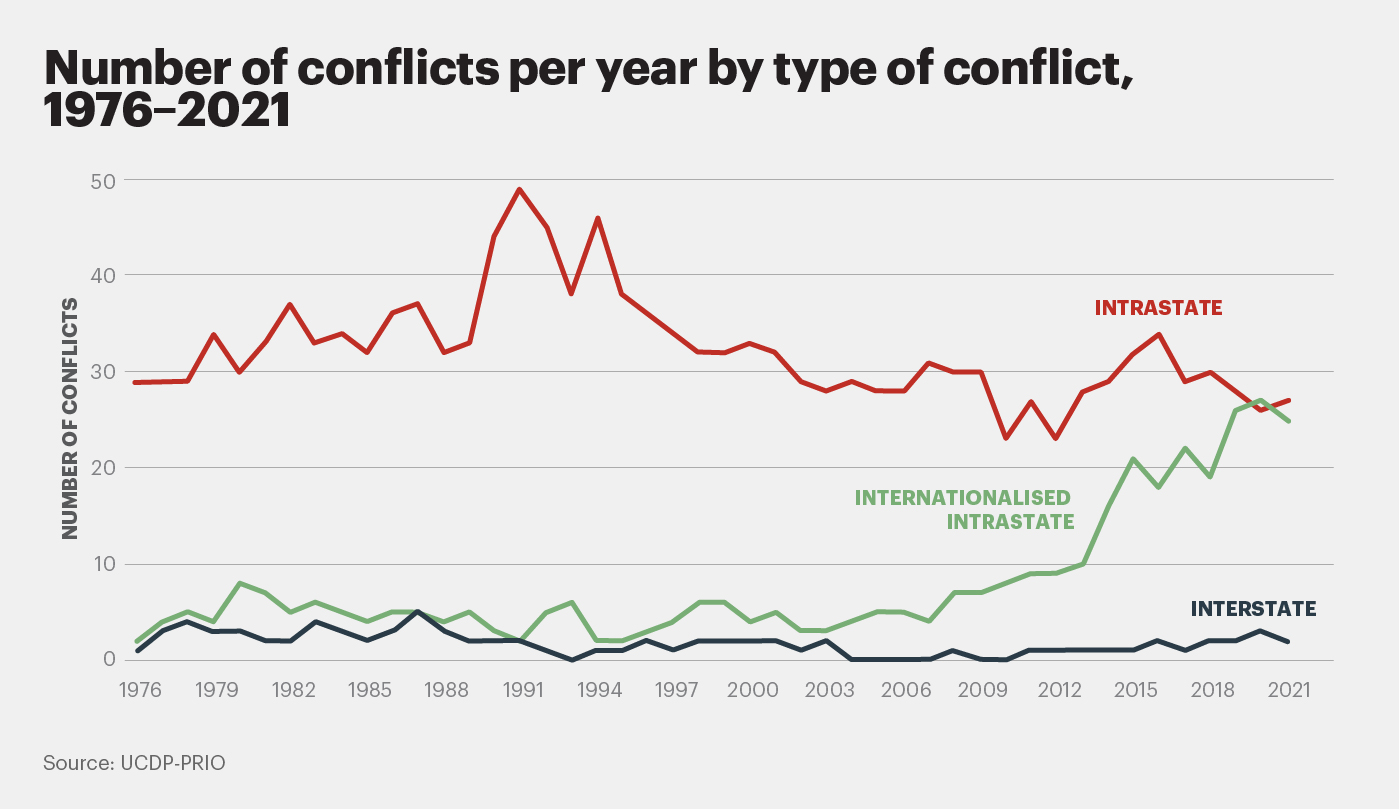
Drones, or Unmanned Aerial Vehicles (UAVs), have gained prominence in global conflicts, with their use by both state and non-state entities skyrocketing. Previously exclusive to major nations for counterterrorism actions, drones have expanded to traditional warfare, targeting troops and infrastructure, evident in conflicts like Nagorno-Karabakh, Ethiopia, Ukraine and Myanmar. Since 2018, state drone strikes have increased by 50%, and non-state use doubled. This surge is attributed to countries like China, Iran, Israel, the UAE and Türkiye mass-producing varying drone technologies. Notably, drones’ strategic impact was highlighted in Azerbaijan’s 2020 victory over Nagorno-Karabakh using Israeli and Turkish drones. Despite this surge, drones still represent a minor percentage of total conflict engagements and fatalities.
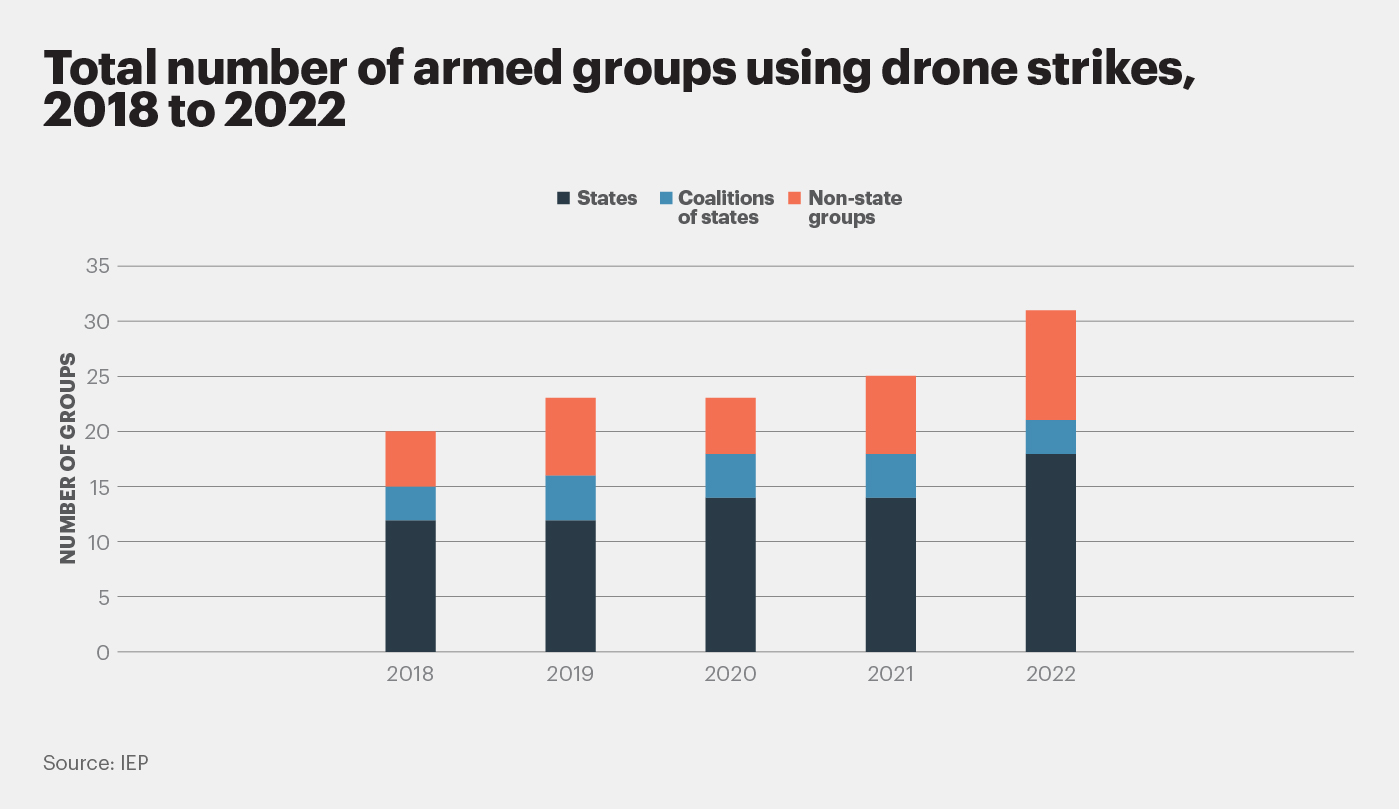
As we delve deep into the intricate web of GPI, it becomes essential to study domain trends such as militarisation, ongoing conflicts, trends in external and internal conflict indicators and the impact of terrorism. This provides a comprehensive understanding of where our world stands today, and which sectors require immediate attention.
Surprisingly, since 2008, out of the three GPI domains, only Militarisation showed signs of improvement. It paints an encouraging picture where five of its six indicators experienced growth. These improvements are not confined to specific areas but span across the globe. The armed service rate witnessed a substantial decline in 113 countries, with the average personnel rate dropping significantly from 46 to 403 soldiers per 100,000 population. Two indicators that particularly stood out with marked enhancements were UN peacekeeping funding, which saw advancements in 123 countries, and military expenditure. Though military expenditure in terms of GDP% witnessed improvements in 92 countries in 2022, the overall military spending increased. The global average for military expenditure as a percentage of GDP shrank from 2.04 to 1.95%. Yet, it’s worth noting that while these figures may suggest reduced military focus, absolute military expenditure went up, especially in powerhouses like China, the US, and India where total expenditure increased by $USD 180 billion, 70 billion and 40 billion respectively since 2008.
However, the Ongoing Conflict domain narrates a concerning tale. All six of its indicators have deteriorated since 2008. A staggering 99 countries experienced a decline, with only 52 showing positive changes, and 10 registering no change since 2008. A disturbing statistic emerging from this is that in 15 countries, a significant portion (at least 5%) of the population is either internally displaced or classified as refugees.
Despite the bleak landscape, there’s a silver lining. Countries with a history of intense conflicts over the past two decades have started to show substantial improvements in their peacefulness. Yet, some challenges persist, especially concerning terrorism. The impact of terrorism had intensified until 2015, but fortunately, the recent years have seen an encouraging reversal in this trend.
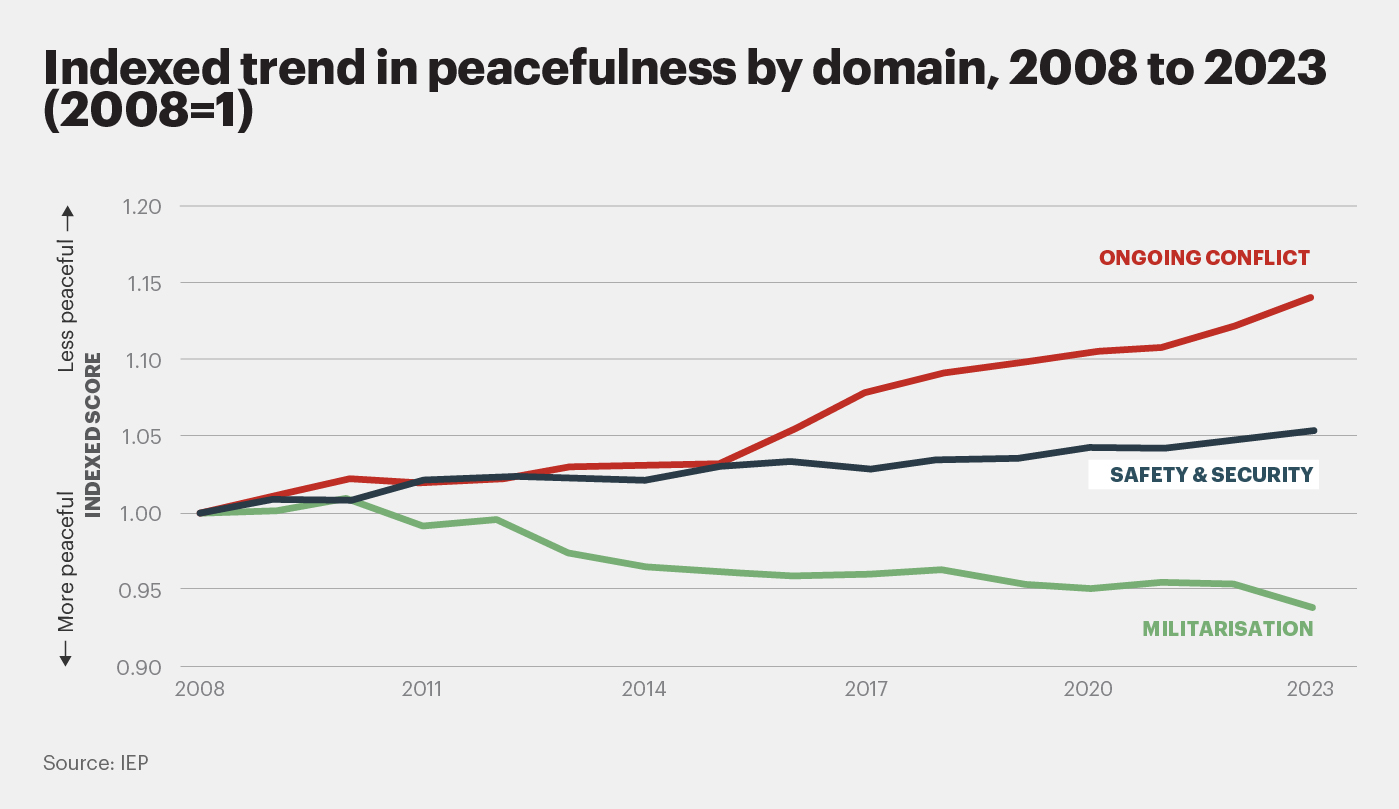
External conflicts emerged as a significant point of concern. It is the indicator that has suffered the most since 2008, with a decline of over 50%. Out of 163 countries in the GPI, a whopping 122 had been engaged in at least one external conflict since 2008, although the majority did so as part of broad coalitions and not committing substantial resources. This spike in external conflicts indicates the increasing tendency of nations to intervene in the internal conflicts of other countries, often as part of larger coalitions.
The recent years have been tumultuous with 77 nations experiencing a decline in peace since 2008. Furthermore, 59 countries have seen political instability surge, in stark contrast to only 22 countries where the situation has improved.
The number of battle deaths had been rising with the total number of conflict-related deaths rising by 45% between 2020 and 2021. The largest year-on-year deterioration occurred on the external conflicts fought, deaths from internal conflict, and political instability indicators. Other large indicator deteriorations were internal conflicts fought, number of refugees, IDPs and violent demonstrations.
The global peace landscape is a mixed bag. While strides in militarisation provide hope, the escalating conflicts both internal and external, present urgent areas of focus. Recognising these trends and their implications is the first step in the long journey towards a more peaceful world.
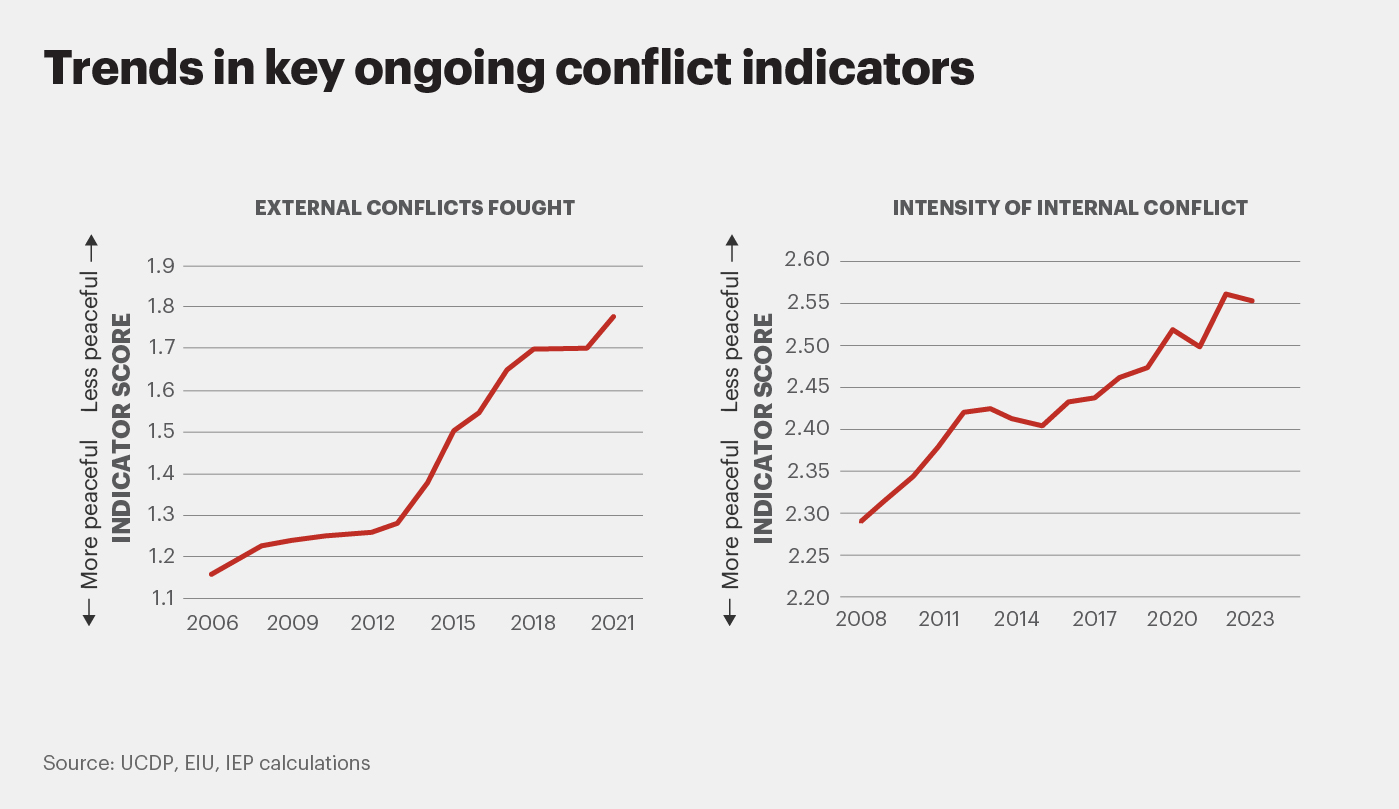
As the geopolitical landscape evolves with the heightened influence of various nations, there’s an increasing need for global cooperation to achieve lasting stability. One of the paramount frameworks to understand this cooperative potential is the concept of Positive Peace.
At its core, Positive Peace embodies the attitudes, institutions, and structures that create and sustain peaceful societies. Importantly, societies with higher levels of Positive Peace tend to experience not just tranquillity but also better economic growth, environmental stewardship, well-being and resilience.
Recent data from the IEP shows the value of these pillars. The Positive Peace Index (PPI) analysis indicated global growth of 2% in Positive Peace since 2009, with majority countries showing improvement. However, global challenges like the COVID-19 pandemic have slightly hindered this upward trajectory, emphasising the fragility of progress. The data showcases that structural aspects like access to information and economic growth are improving faster than attitudinal factors.
To visualise these findings, consider the trend from 2009-2022: Seven out of the eight pillars of positive peace exhibited improvement. The Structures domain, encompassing aspects like internet use and life expectancy, recorded the most substantial gains. Meanwhile, certain pillars such as Low Levels of Corruption witnessed a dip, primarily due to issues like factionalised elites.
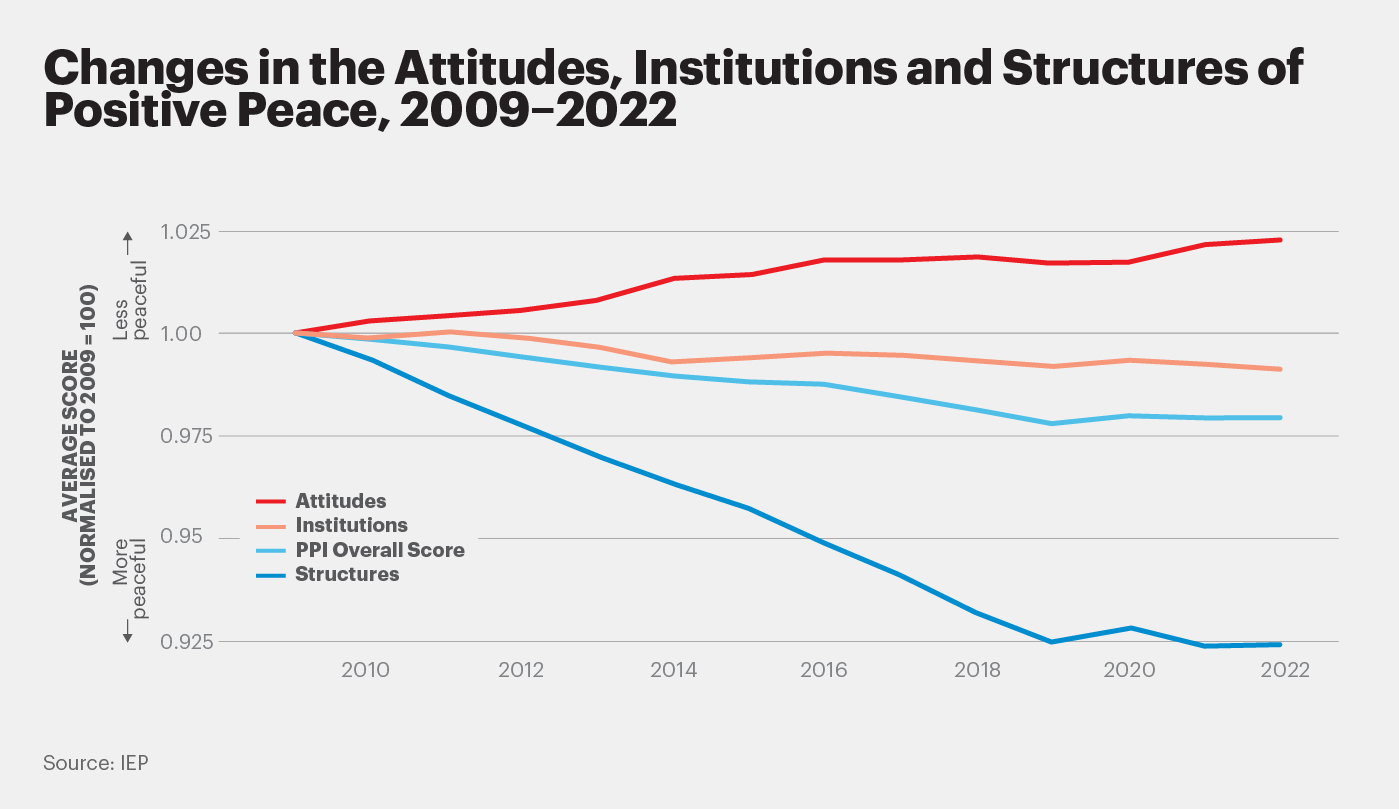
In an era of increasing geopolitical tensions, Positive Peace offers a roadmap. It underscores the importance of building stronger institutions, fostering openness, and promoting mutual respect on the global stage. As geopolitical players navigate this complex terrain, embracing the principles of Positive Peace can pave the way for a future defined not by conflict, but by cooperation and mutual growth. The slow but steady nature of Positive Peace indicates that global peace requires patience, long-term commitment, and consistent efforts. Through international collaboration rooted in these principles, we can envision a world that not only survives challenges but thrives amidst them.
